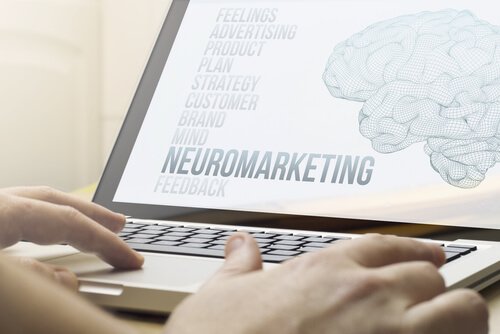Neuroscience and the Consumer's Brain

Selling more and better is one of the goals of capitalism. This is why companies strive to ensure that consumers want to buy their products. Advertising, marketing campaigns, and persuasion techniques are used to improve sales. And if this weren’t enough, a discipline that studies the consumer’s brain emerged not too long ago.
We’re talking about neuromarketing, which studies the consumer’s habits. Thanks to this science, we now know more about what happens in our mind when we shop. In this article, you’ll learn some very important discoveries.
What Does Neuromarketing Study?
Until now, sales techniques had dodged science; in fact, they had basically fallen into oblivion by trial and error. However, in recent decades, there have been many advances in our knowledge of different aspects of the human mind. Thus, as of today, we know a lot more about things such as memory, perception, and motivation.
On the other hand, thanks to modern neuroimaging techniques, we now better understand how the consumer’s brain works. Together, these two concepts gave rise to neuromarketing; a science that has revolutionized the way big companies sell.
Many brands are applying all these discoveries and taking advantage of our brain’s biases in order:
- Create more attractive products.
- Improve the company’s image.
- Differentiate their products from the competition’s.
- Modify the sales environment in order to increase sales.
- Increase their profit.
Therefore, studying the consumer’s brain has helped companies sell their products. Below, you’ll find some of the most common applications of neuromarketing’s newest discoveries.

Shopping Cart Design
Have you ever wondered why shopping cart wheels seem to divert on some large surfaces? Believe it or not, this feature was implemented on purpose. Diverting the carts to shelves makes consumers focus more on the products exhibited in them. And, as a consequence, they buy more.
But this isn’t the only shopping cart characteristic that was inspired by the study of the consumer’s brain. Their size also plays a huge role. Due to the way our mind works, we tend to try to fill whatever container we’re carrying. Therefore, the larger the shopping cart, the more money we usually spend.
Showing Products at Supermarkets
Another practical application of neuromarketing is the design of stores and shelves. Several studies on the functioning of the human brain show that we tend to choose what’s most visible. After all, we don’t really enjoy crouching, do we?
The height at which the products are placed on supermarket shelves has everything to do with this. Thanks to techniques such as scanning of pupil movement, it’s been discovered that, while we shop, we tend to gravitate towards the things that are placed at eye level. Therefore, expensive brands are usually right in front of our face, while more affordable ones remain at the bottom of the shelves.
On the other hand, staple foods are usually located at the end of the supermarket. The logic behind this is that, in order to acquire them, we have to go through many aisles that call our attention. In general, we end up buying a lot more than we initially needed.

Effects of these Techniques on the Consumer’s Brain
After reading about these neuromarketing techniques, you may be wondering if the consumer has any free will at all. How easy is it to manipulate us so that we buy certain products?
This question is precisely the focus of some studies that were carried out by R. Mark Wilson, Jeannie Gaines, and Ronald Paul Hill. Unfortunately, the answer to it isn’t entirely clear just yet. However, as in the field of persuasion, we know that these techniques have a greater effect when we don’t pay a lot of attention to what we do. This may happen when we’re in a hurry, for example.
That being said, if you want to avoid falling into the trap of neuromarketing, it’s better to take your time while you’re shopping. Take your shopping list with you and try to stick to it as much as you can. A popular piece of advice is to not go grocery shopping when you’re hungry. Otherwise, you’re going to be craving basically every food available.
These little tricks can make the difference between a purchase dictated by your needs and a purchase dictated by a store.
This text is provided for informational purposes only and does not replace consultation with a professional. If in doubt, consult your specialist.








